Nathan and Emily's Herero Wedding Begins
I’m back. This time from the rear seat of Nathan’s Toyota Rav 4. Brett’s driving, doing his best at 120 km per hour to avoid the all-too-common pothole, keep an eye out for herds of crossing cattle and to make his best guess at the often-confusing road signs along the way. We’re on the road from Rundu to Katima Mulilo, driving along the extremely narrow strip of land in Namibia’s far northeast corner. A strip of land that shares borders with Angola and Zambia to the north and Botswana to the south.
Yesterday Nathan and I left Rehoboth at 6:00a.m. and picked Brett up in Windhoek before setting off on the 7-hour journey to Rundu. Our final destination today is Katima, and the Zambezi (Caprivi) region, where Brett served in the Peace Corps in the early and mid 90s. Tonight we’ll find a comfortable place to stay, and tomorrow we’ll head into the villages to meet some of Brett’s people. Our stay last night was at the Kavango River Lodge in Rundu, a beautiful place set high on a green bluff with a spectacular view of the wide and flowing Okavango River that separates Namibia from Angola. We arrived in the mid-afternoon, giving us plenty of time for beers and relaxation on the hotel veranda and me time to get setup and teach one of my online English classes. Dinner last night included “marathon chicken,” a free-range chicken that’s common in the north, and Mahungu, a preparation of millet with the consistency of mashed potatoes. It was all quite tasty.
So, back to the wedding…
The last I wrote we were enjoying time with some of Nathan’s former students and colleagues in Otjinene Thursday evening, the day before the wedding festivities would begin. On Friday the action commenced…
That morning we drove into the town center to grab a few more supplies and to meet up at Paul’s to load up the vehicles with tents, coolers, a generator, gas cans and large tubes of ice, among other things. We’d be spending three days in the bush, without electricity or access to a kitchen, bathroom, shower or refrigerator. It was important we were prepared. We also watched as Paul and Uripuete left with the truck and trailer to pick up the cattle Nathan would be handing over to Emily’s parents. After a few minutes they returned – three cattle packed into a small trailer, looking a bit disoriented and unaware of the fate that awaited them later that day. Not an immediate, unfortunate fate, mind you. Yes, they’d be slaughtered someday, but for now they’d simply be joining the larger herd on Emily’s parents’ farm. Probably an upgrade from wherever it was they came.
Then the party on the farm began! Well, okay, not really. We still had to get there, on the narrowest of sandy roads through tall grassland and Herero communal land. And once we arrived, we had to wait until camp was setup. Yep, that’s what I said, “wait until camp was setup.” I’ve done a lot of camping in my day, but never have I ever done camping as easy as this - camping where I’ve felt like a bit of a schmuck considering how little work I did. Brett and I were considered honored guests and were told it was our job – almost our duty – to sit while camp was setup, while a cattle was being slaughtered, and while lunch was being prepared. So, yes, we had to wait. Not a hardship. A very easy wait, talking with Nathan, meeting guests who stopped by visit, and watching all the hustle and bustle around us.
A note on the cattle and what would become the main courses during our time at the wedding. Herero love their meat. They are a people of cattle, a people who trade in cattle, who value it, and who consider herds of cattle an investment for a prosperous, bright future. And during a weekend like this, the meat does not arrive frozen or cooled in a refrigerator. The meat comes living, in the form of the actual animals that will be killed for our meals. To a westerner’s eyes, the slaughter of animals during a wedding like this could be quite jarring, considering that the killing of animals for meat in our culture happens far from our gazing eyes with meat being neatly cut and packaged for display in clean, cool, bright supermarket cases. For this occasion, the slaughter of an animal meant leading it just to the edge of camp, within easy view of all the guests, using rope to take it down to the ground and then puncturing a knife into the jugular vein and restraining it until enough blood drained from its neck to bring death. I watched it. I videotaped it. It was difficult to see, but I wanted, at the same time, to honor the process and not be afraid to see something that is a traditional part of a Herero wedding. Our lunch meal on this first day of the weekend was liver from a sheep, the animal donated to the wedding party by Emily’s sister, Florence. Because I was watching, and because the men doing the slaughtering noticed my curiosity, they invited me to help once the sheep was dead. As they skinned it, one of the men handed me a knife and invited me to take part. I didn’t last long, mostly because I had no idea what I was doing, but I was grateful the men included me in this ritual.
I’m not going to go into the history of the Herero people too much here, because I only have a rudimentary knowledge of it myself, but if you’re interested, read more. It’s a fascinating, at times very tragic, story. Herero are a proud people who were sadly and unjustly persecuted, driven off their land, and killed in massive numbers by the German army at the beginning of the 20th century. Along with the Nama people, they attempted a rebellion against the Germans, but after a period of four years, the Herero went from a population of roughly 80,000 down to a mere 15,000. It's estimated that around 65,000 Hereros were killed. Today, there are monuments and landmarks scattered across the land commemorating places of mass executions and attempted Herero uprisings. They now celebrate the strength and determination they showed in the face of inhumane, barbaric, genocidal treatment from the Germans roughly 100 years ago.
Once camp was established, tents setup, things unpacked and lunch consumed, we prepared for the presentation of the gift of cattle and the handing over of the cash payment. I learned quickly that dress for the weekend would be formal. I knew there would be a time in which I’d be donning a sport coat, dress pants and hat, but I didn’t realize it would be for the entire wedding. So, Brett and I did our part to adhere to the cultural code, got on our best duds, and joined Nathan’s contingent for the walk across camp.
Some context on a couple of things. One, Nathan was not allowed, really, to leave our section of the camp for most of the weekend. He was expected to remain in a chair, either inside or just outside his tent. Emily, as well, could not leave her location. She was to stay indoors, inside one of the family’s small farmhouses, attended by members of her bridal party, dressed for the whole weekend in her bright white wedding dress. Most importantly, Nathan and Emily were not allowed to see each other during the day, with Nathan given permission only to visit and sleep with her in the evenings. However, even with this concession, he was not allowed to change out of his suit during the night. Only his shoes and hat could be removed. The other bit of context to present is the layout of the family’s farmland and our camps. Emily’s parents’ farm is quite vast, covered mostly in grasses growing in the fine white sand and with 10-foot trees scattered throughout, providing wood for cooking and necessary shade for the hot, sun-filled afternoons. While our encampment was several hundred yards from the farmhouses, Emily’s party was in tents much closer to the properties, mostly out of view from us. There were also collections of tents scattered in various other locations because, as it goes, a wedding like this doesn’t come with invitations. Anyone in the community is welcome. So, people pack up their things, grab their tents and some food and drink, hitch a ride, and join in the weekend-long party.
A group of us made the walk from our camp to Emily’s, led by Lady’s mother, along with Nathan’s Herero representatives, and accompanied by the three cattle. We were told to walk closely together, heads somewhat bowed and feet slowly shuffling through the sand. Past Emily’s camp we approached the stable, where we were greeted by many onlookers – the women dressed in formal Herero dresses and head coverings. We met up with Emily’s father and other members of her family, then stopped for some words from the elders before the cattle were coerced and led into the stable, to join the rest of the herd. We followed behind them, just a few of us from Nathan’s side and a few gentlemen from Emily’s. It was at this point a wad of cash was handed over. One of Emily’s people carefully and deliberately counted the money, confirmed the necessary amount had been given, and then the ceremony was complete. The first of several we would observe during the weekend.
Another rite later that evening was a formal meeting between those of us representing Nathan and the men representing Emily, including her father. For this, again we walked very slowly to Emily’s camp, grouped closely together as we approached the small farmhouse where Emily was staying. We were told to bow our heads and enter the doorway with our backs hunched over and eyes to the ground. We were escorted to chairs, Emily hidden out of view but observing us through a curtain dividing the one-room home. We sat as one of Emily’s elders said some words and commemorated the joining together of Emily and Nathan. It was quick and solemn, and before we knew it, we were up and back outside in the waning light of the evening.
The remaining hours Friday were spent in a more casual, let your hair down, sort of way. (Still dressed in our jackets and hats, mind you, and of course me having little hair left to let down.) We drank and we ate – again the meat from the sheep slaughtered earlier. It was a party-like atmosphere with some revelers stealing the show with their loud, drunken behavior. The night also gave us the opportunity to rejoin Emily’s camp and observe, around a blazing campfire, 20 or so women seated in a row of chairs under an enormous tree and under the shimmering light of a full moon singing traditional hymn after traditional Herero hymn. It was a beautiful way to put to end a most unique of days. I could have stayed up, drinking more and partying into the evening, but I figured it’d be better to get a good night’s sleep and make sure I was in tip-top shape for what would be another big day ahead Saturday.
Just as Friday night ended and the weekend would continue the following day, so will this blog entry. I’ll end it here. Part 2, as I’m calling it, is complete. I’ll be back to chronicle days two and three of the wedding in a future post. I hope you’ll be back to read it.
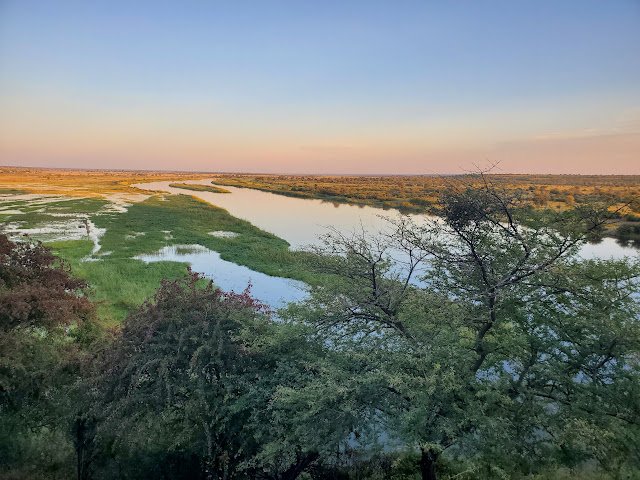


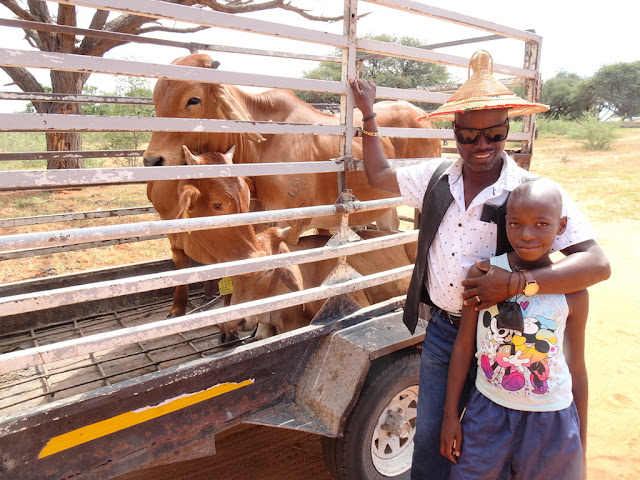



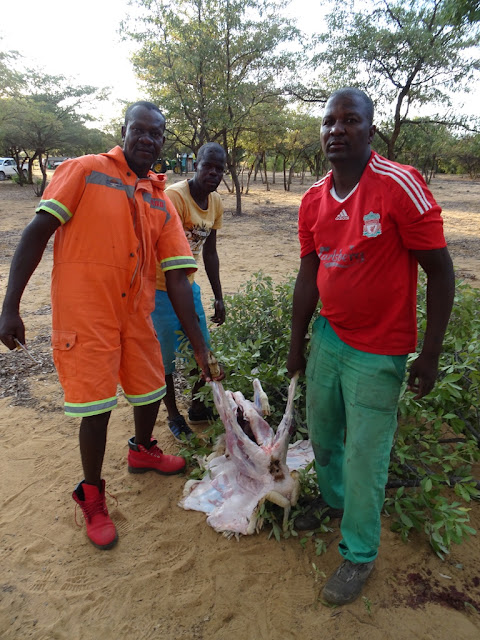





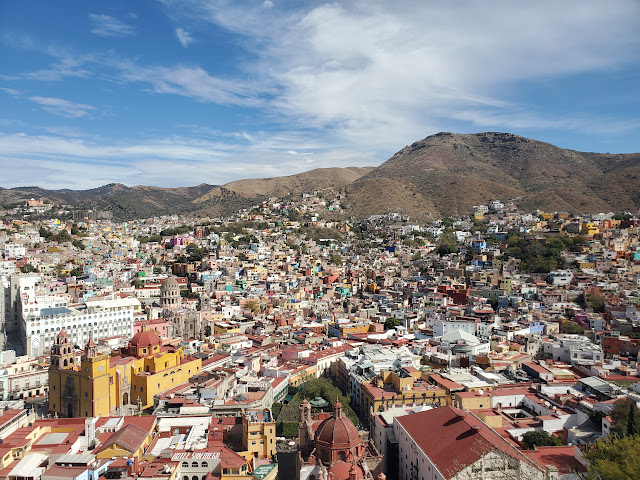
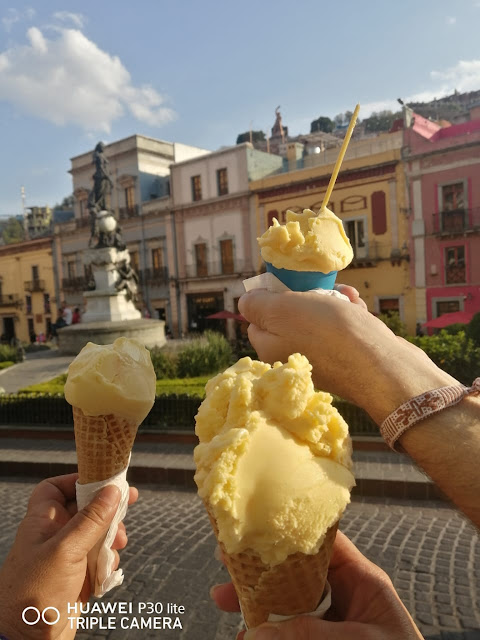
Love the story!
ReplyDeleteWhat an amazing experience !
ReplyDeleteThank you, Chris!! Very interesting!
ReplyDelete